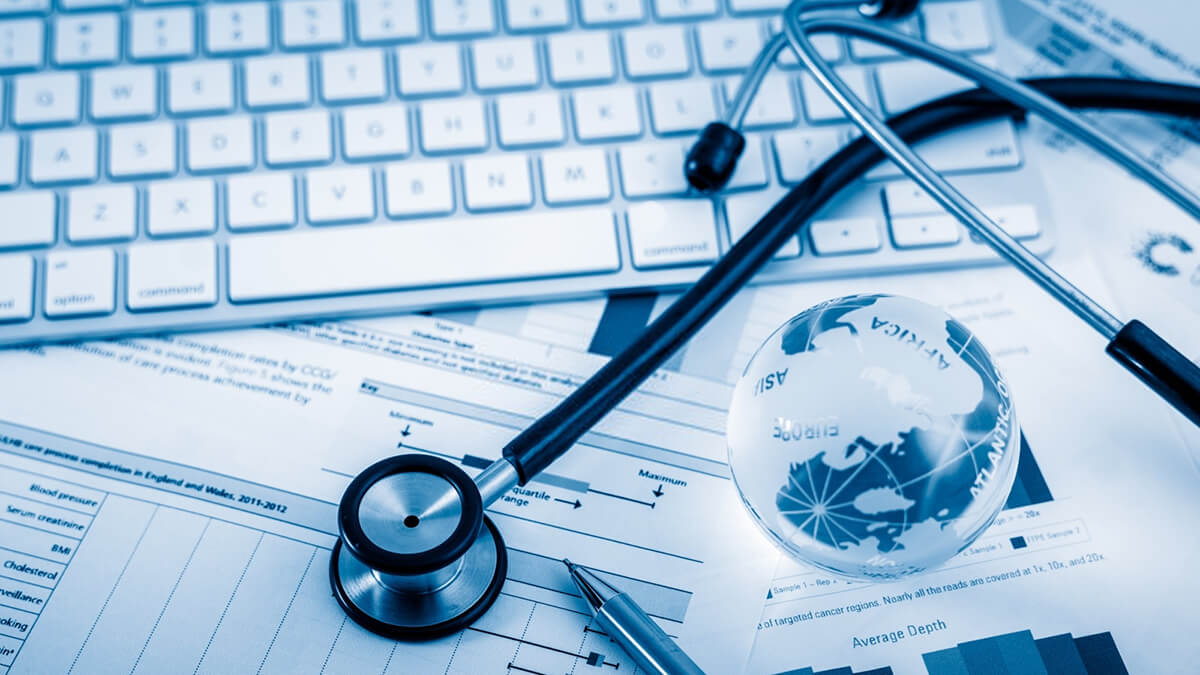Ideal Practices in Medical Administration for Improving Performance and Lowering Expenses
In the ever-evolving landscape of health care, the pursuit of finest techniques in medical management is extremely important for improving performance and curbing expenditures. By integrating sophisticated modern technologies such as electronic health records and telemedicine, medical care carriers can simplify procedures and enhance patient treatment. Nonetheless, innovation alone is not a cure all; optimizing source allowance and promoting joint interaction among care teams are just as crucial (medical administration). As organizations aim to stabilize quality and expense, what methods should be focused on to attain these dual goals? The solution to these concerns hold the trick to a more lasting health care system.
Leveraging Advanced Technology
The integration of digital options into healthcare systems has actually transformed the method facilities operate, enhancing procedures and improving patient care. By systematizing client details, EHRs eliminate the requirement for difficult documents and assist in seamless interaction amongst healthcare providers.
Telemedicine is an additional technical improvement that has actually revolutionized individual interaction. It supplies convenience for both individuals and medical care professionals by enabling remote assessments, which can lower the demand for in-person sees and enhance appointment scheduling. Furthermore, telehealth systems can extend healthcare accessibility to country or underserved areas, linking spaces in care shipment.
In addition, making use of Expert system (AI) and artificial intelligence is coming to be significantly common in anticipating analytics, permitting early detection of prospective wellness issues and more educated decision-making. These technologies, when incorporated successfully, can improve diagnostic accuracy and customize individual therapy plans, eventually resulting in improved medical care end results and functional effectiveness.
Optimizing Resource Allotment
By strategically taking care of sources such as employees, tools, and funds, healthcare facilities can significantly enhance their functional efficiency, improve patient results, and lower unneeded expenses. The initial step in maximizing resource allotment entails carrying out an extensive evaluation of current assets and identifying areas where resources might be underutilized or exhausted.
Prioritizing resource allotment based upon patient requirements and solution demands is crucial. This involves aligning sources with high-demand locations, such as emergency treatment or specialized treatments, to guarantee timely and efficient individual treatment. Implementing versatile staffing models can likewise maximize labor resources by readjusting employees appropriation in feedback to changing client volumes. In addition, accepting telemedicine and various other technological options can alleviate physical resource restrictions by offering different opportunities for patient-provider communications.
Funds ought to be carefully kept an eye on and designated with tactical insight to sustain both short-term functional needs and lasting institutional objectives. This includes investing in training programs that improve staff competencies and embracing energy-efficient methods that reduce operational costs (medical administration). Eventually, a maximized source allotment method fosters a lasting medical care environment that is responsive, effective, and economically prudent
Streamlining Workflow Procedures
When healthcare centers purpose to improve operational effectiveness, enhancing operations procedures becomes a pivotal focus. Reliable workflows reduce redundancy, remove unnecessary steps, and boost coordination among healthcare specialists. This strategy not just speeds up service delivery however additionally enhances the top quality of person care.

Next, modern technology combination plays a considerable role in simplifying operations. Carrying out electronic wellness documents (EHRs) and computerized doctor order access (CPOE) systems lowers paperwork, decreases human mistake, and makes certain details comes to all pertinent personnel. Furthermore, leveraging telemedicine systems can enhance patient appointments and follow-ups, lowering the stress on physical framework.

Eventually, streamlined process bring about cost decreases and boosted client satisfaction, promoting a much more lasting health care environment.
Enhancing Information Administration
Structure upon streamlined process, optimizing data administration becomes an important element ahead of time healthcare management. Efficient data management systems are crucial for keeping accurate person documents, enhancing decision-making, and making sure compliance with governing standards. By applying durable information administration options, health care centers can enhance the top quality of individual care while concurrently lowering operational expenses.
One trick element of enhancing information management is the assimilation of sophisticated digital health record (EHR) systems. These systems assist in the seamless exchange of client details across different divisions, reducing replication of examinations and reducing errors. A properly designed EHR system sustains information analytics, making it possible for healthcare service providers to recognize patterns and make notified decisions concerning client treatment.
Furthermore, guarding patient data is vital. Embracing comprehensive cybersecurity steps, consisting of encryption and routine audits, makes sure the integrity and confidentiality of sensitive info. This not only protects patients but also keeps the institution's track record.
Buying team training is one more critical aspect. Educating health why not try here care specialists on data monitoring practices boosts their capability to efficiently utilize innovation, bring about enhanced patient end results. In verdict, enhancing information administration via innovative technology and extensive training is crucial for attaining effectiveness and price reduction in medical administration.
Fostering Collaborative Communication
An important part in progressing medical management is promoting collective communication amongst medical care experts. Effective communication is critical for making certain smooth person care, enhancing therapy outcomes, and minimizing mistakes. By urging open discussion and control across multidisciplinary teams, healthcare companies can improve their functional effectiveness and reduce unnecessary prices.
Central to this approach is the assimilation of interaction innovations such as digital wellness records (EHRs) and secure messaging platforms, which promote the have a peek here rapid exchange of critical client Source info. These devices allow medical care providers to gain access to and share data in real time, ensuring that all group participants are educated and lined up in their decision-making processes. Additionally, regular team conferences and interdisciplinary rounds can better advertise a society of collaboration and accountability.
Training programs concentrated on enhancing communication skills are likewise vital. Inevitably, fostering collective interaction leads to enhanced healthcare delivery and price financial savings.

Final Thought
Including innovative modern technology, such as digital wellness documents and telemedicine, along with optimized source appropriation and streamlined workflow processes, is crucial for improving effectiveness in clinical management. Reliable information administration and fostering collective interaction among medical care groups are important for minimizing redundancies and improving care quality. By focusing on preventative care and taking part in top quality improvement campaigns, medical care companies can attain considerable price savings and boosted individual end results, thereby making certain sustainable medical care shipment in a progressively complex environment.
Comments on “A Total Overview to Medical Administration Certifications and Credentials”